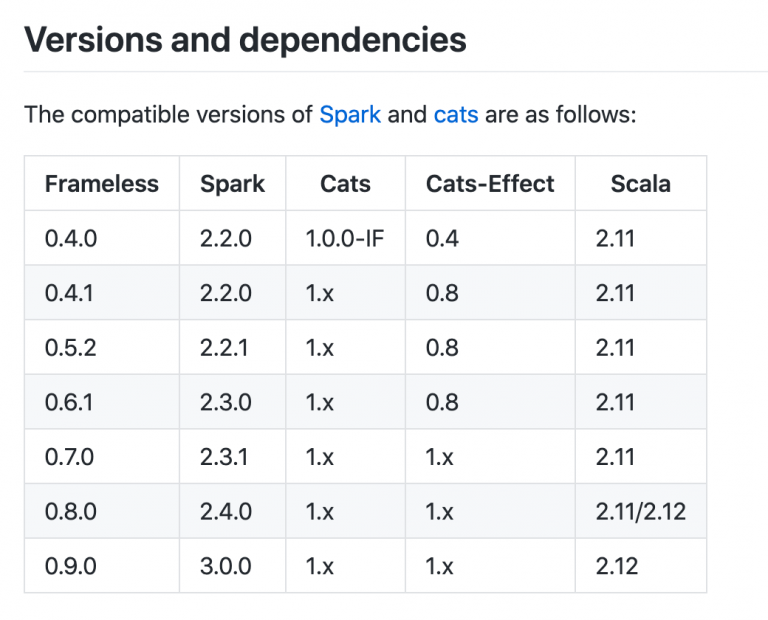

Introduction to Programming and Problem Solving Using Scala Object-Orientation, Abstraction, and Data Structures Using Scala You can visit his YouTube channel for more videos. Scala resource file path Keep in mind that you need to use an appropriate version. To use V2 implementation, just change your. The V2 API offers you several improvements when it comes to file and folder handling.Īnd works in a very similar way than data sources like csv and parquet. No growing of the table will be performed.

Writing will only write within the current range of the table. Reading will return all rows and columns in this table. 'My Sheet'!B3:F35: Same as above, but with a specific sheet.If there are more rows or columns in the DataFrame to write, they will be truncated. Writing will start in the first cell ( B3 in this example) and use only the specified columns and rows. Reading will return only rows and columns in the specified range. Writing will start here and use as many columns and rows as required. Reading will return all rows below and all columns to the right. The location of data to read or write can be specified with the dataAddress option.Ĭurrently the following address styles are supported: mode( "append ") // Optional, default: overwrite. option( "timestampFormat ", "mm-dd-yyyy hh:mm:ss ") // Optional, default: yyyy-mm-dd hh:mm:ss.000 option( "dateFormat ", "yy-mmm-d ") // Optional, default: yy-m-d h:mm If the sheet name is unavailable, it is possible to pass in an index: ).schema(m圜ustomSchema) // Optional, default: Either inferred schema, or all columns are Strings Requires unlimited strength JCE for older JVMs WorkbookPassword = "pass " // Optional, default None. If set and if schema inferred, number of rows to infer schema from
#SPARK SCALA ZIP#
Number of bytes at which a zip entry is regarded as too large for holding in memory and the data is put in a temp file insteadĮxcerptSize = 10, // Optional, default: 10. TempFileThreshold = 10000000, // Optional, default None. MaxByteArraySize = 2147483647, // Optional, default None. If set, uses a streaming reader which can help with big files (will fail if used with xls format files) MaxRowsInMemory = 20, // Optional, default None. TimestampFormat = "MM-dd-yyyy HH:mm:ss ", // Optional, default: yyyy-mm-dd hh:mm:ss InferSchema = false, // Optional, default: falseĪddColorColumns = true, // Optional, default: false If true, format the cells without rounding and scientific notations
UsePlainNumberFormat = false, // Optional, default: false. #N/A) will be converted to the zero values of the column's data type. SetErrorCellsToFallbackValues = false, // Optional, default: false, where errors will be converted to null. TreatEmptyValuesAsNulls = false, // Optional, default: true _ val spark : SparkSession = ? val df = (ĭataAddress = "'My Sheet'!B3:C35 ", // Optional, default: "A1" excel method which accepts all possible options and provides default values: schema(m圜ustomSchema) // Optional, default: Either inferred schema, or all columns are Stringsįor convenience, there is an implicit that wraps the DataFrameReader returned by spark.readĪnd provides a. option( "workbookPassword ", "pass ") // Optional, default None. option( "excerptSize ", 10) // Optional, default: 10. Number of bytes at which a zip entry is regarded as too large for holding in memory and the data is put in a temp file instead option( "tempFileThreshold ", 10000000) // Optional, default None. option( "maxByteArraySize ", 2147483647) // Optional, default None. option( "maxRowsInMemory ", 20) // Optional, default None. option( "timestampFormat ", "MM-dd-yyyy HH:mm:ss ") // Optional, default: yyyy-mm-dd hh:mm:ss option( "addColorColumns ", "true ") // Optional, default: false option( "inferSchema ", "false ") // Optional, default: false option( "usePlainNumberFormat ", "false ") // Optional, default: false, If true, format the cells without rounding and scientific notations option( "setErrorCellsToFallbackValues ", "true ") // Optional, default: false, where errors will be converted to null. option( "treatEmptyValuesAsNulls ", "false ") // Optional, default: true option( "dataAddress ", "'My Sheet'!B3:C35 ") // Optional, default: "A1" _ val spark : SparkSession = ? val df = spark.read


 0 kommentar(er)
0 kommentar(er)
